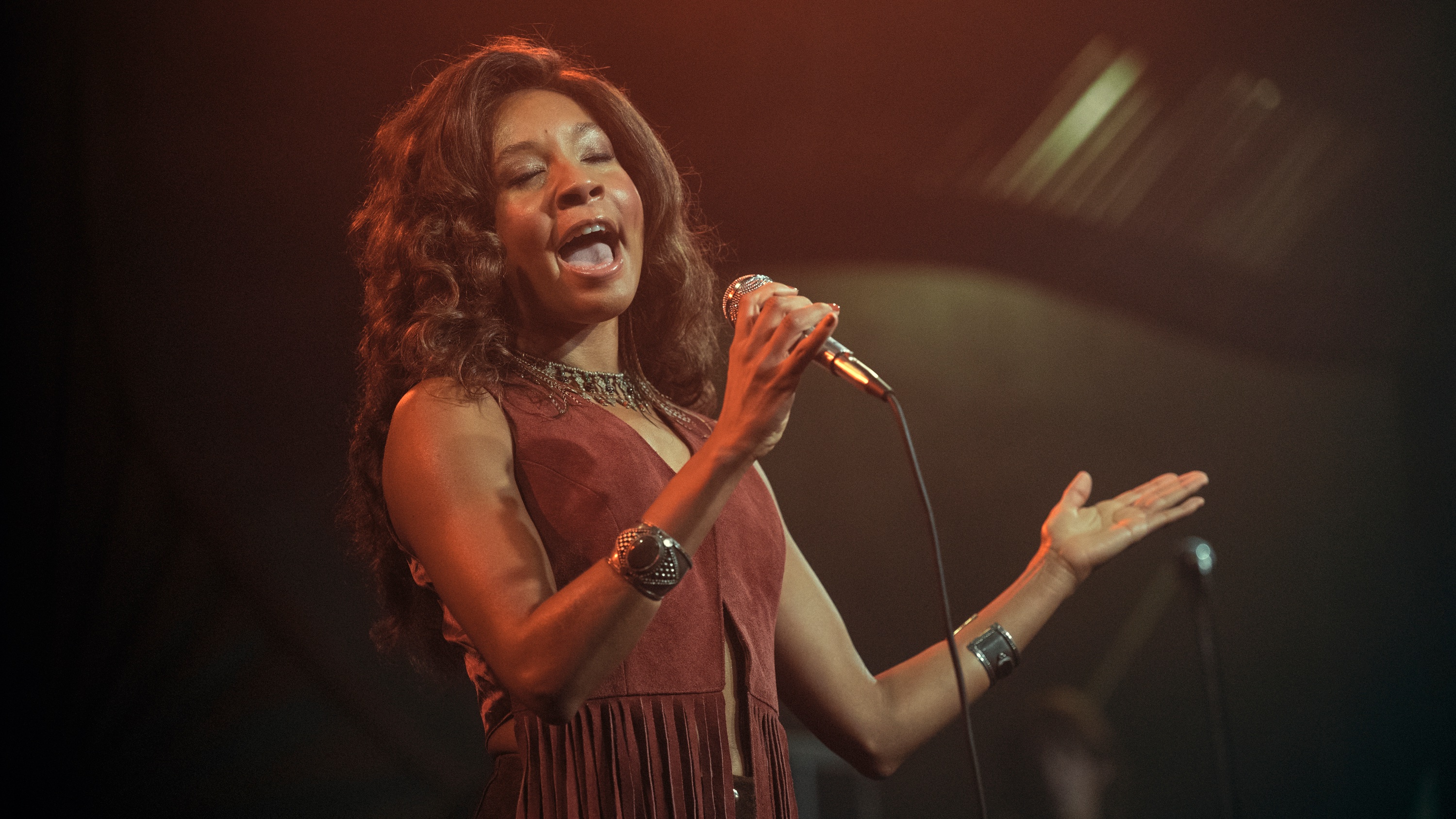‘Daisy Jones & The Six’ Had More Clever Music References Than You May Have Noticed

By now, we’ve likely established across the board that Daisy Jones & The Six took direct inspiration from Fleetwood Mac. Similarly, its story was built around the mythos of the LA scene from the ’70s and going into the ’80s, every high and low included. But what I appreciated about the show was how it expanded its vision beyond that scene, and showed how other scenes were burgeoning, as well as intersecting.
In particular, Episode 7 introduced us to Simone—presumably inspired by Donna Summer—and her musical deluge into what would become the NYC disco circuit. It was fantastic! So much so that I was frustrated by it! I wanted an entire series based on that part of the episode, a queer Black woman fleeing the constraints of LA and finding her own life in NYC. Having to so quickly shift focus back to Daisy and her dumpster fire of a relationship with Nicky made all that buildup fall flat. So not disco.
But it was beautiful, while we had it. The majority of the show really does have a predominantly white focus, and while the Laurel Canyon scene was incredibly fun, it wasn’t the only scene of its era. That junction between the 70s and the 80s was a hotbed of creativity and innovation, and disco was absolutely one of the strongest forces driving that creativity. And hey, it’s a testament to the show’s production that, despite my limited knowledge of disco, I wanted to see more of it.
What I am more familiar with, however, is punk. And that aforementioned decade junction was right when punk was starting to sprout from the musical soil of the time. We only get a very brief glimpse of this burgeoning scene in the show, but it was enough to catch my attention and hope for more. In this scene, we see Eddie Roundtree—the whinger of the group, looking for an out—go up and introduce himself to the frontman of the punk group they’d just walked in on. And the guy couldn’t be less impressed by him, despite knowing he was in The Six. Eddie reflects on that evening, recognizing it as “the beginning of the end” of the particular musical scene he belonged to.
And while that might have been somewhat hyperbolic, ultimately he was onto something. This was the time period where we were seeing a shift away from the likes of The Doors, and towards the likes of Patti Smith (AKA the voice of the show’s intro). Rock was becoming more experimental, and punk was starting to emerge as an anti-establishment, anti-“feel good” response to the Laurel Canyonisms of the time.
Honestly, I could take several more series like Daisy Jones, with the same tone, that focus on different scenes from the past. Even if some of these plots weren’t handled with the level of grace and attention I would have liked to see, it’s clear that they were all written with a love for music and music history, and it only brought out my own love for these times.
On that note—if you could see any music scene represented in a Daisy Jones-ish style, what would it be? Let us know in the comments!
(Featured Image: Amazon)
Have a tip we should know? tips@themarysue.com